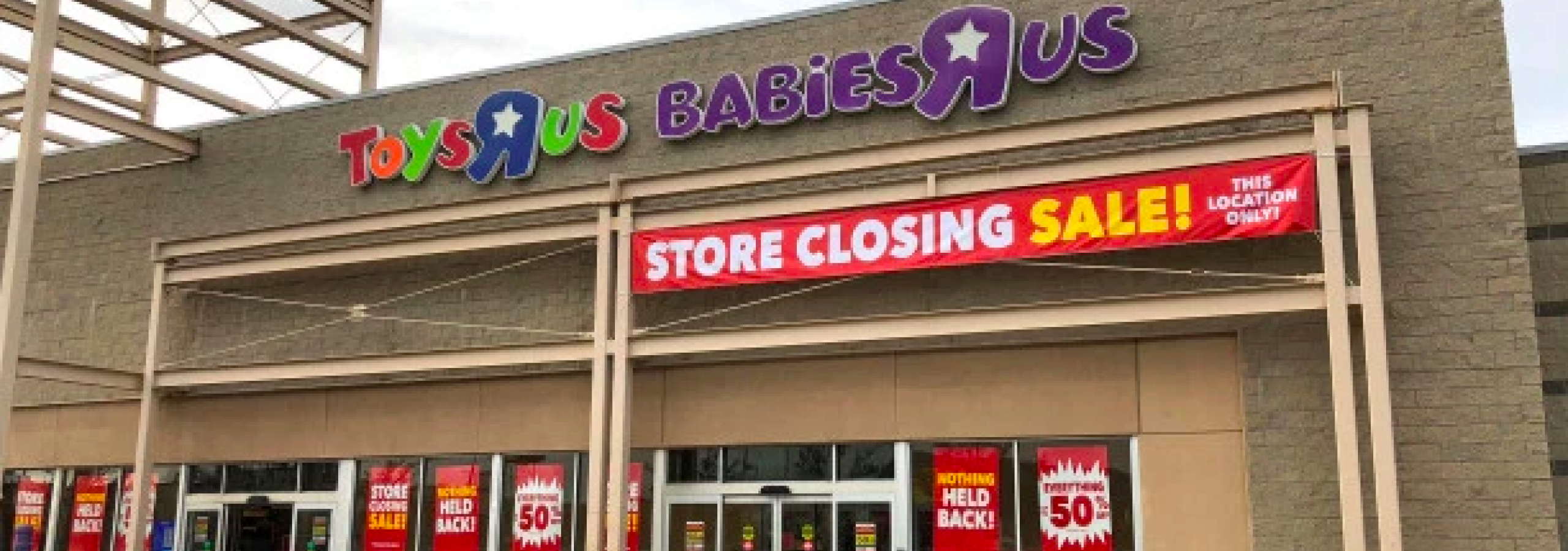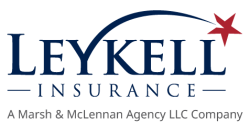
Credit Insurance: What to Do When a Big Client Won’t Pay
The epic fall of iHeartMedia and Toys R Us have taught business vendors no company is too big to fail. Don’t assume your risk factors are low because you have an account receivable that’s a household name.
Take Toys R Us
Started by the late Charles Lazarus, the company forged a reputation throughout the 1980s as “the supermarket of toys.”
Jingles about not wanting to grow up, being a “Toys R Us Kid,” photo ops with Geoffrey the Giraffe. It was a marketing dream come true.
But as its parent company saddled it with more and more debt, the company finally buckled under the pressure. It first announced the closure of around 300 stores. Then, earlier this month, corporate announced it would be going further with a complete liquidation of all 735 stores. It appears that credit insurers stopped backing Toys R Us around a year ago.
What happens to all the toy manufacturers who’d come to depend on Toys R Us as not just a sales location but a significant marketing channel? What will become of the unpaid invoices currently outstanding?
Then, There’s iHeartMedia
The company filed for Chapter 11 bankruptcy on March 14, and it will be going through a restructuring that takes it from $20 million in debt to $11 million.
As with any bankruptcy proceeding, many noteholders ended up paying the price.
According to Pollstar, the debt was brought on by “stagnant revenue, competition from streaming music services, and huge interest payments” on its loans. Affected noteholders include Nielsen, SoundExchange, Warner Music Group, Universal Music Group, Cumulus Media, CBS Corp., Hubbard Broadcasting, Univision, Beasley Broadcast Group, Urban One, and Cox Media Group.
The Pollstar analysis has a full rundown of what each company will receive in the restructuring plan. Here’s a hint: it’s far less than what they’re owed.
These horror stories breed the question: what could any company doing business with these places have done differently to mitigate their risks?
For the remainder of this article, we’ll discuss the one tool that might have helped more than any other: credit insurance.
What Is Credit Insurance?
Credit insurance is a lesser-known but highly effective insurance policy that can protect businesses like those on the losing end of the Toys R Us and iHeartMedia situations.
When you purchase credit insurance, also known as bad debt insurance, you are buying insurance against default on trade credit debts from a client or company with whom you’re doing business. Insolvency or failure to pay within agreed-upon terms and conditions is the catalyst that will trigger a credit insurance claim.
How Does It Work?
In the case of bankruptcies, the International Credit Insurance & Surety Association observes that holders of a trade credit insurance policy will get paid regardless of whether they end up as part of the bankruptcy proceeding.
“Through a trade credit insurance policy, a company can assure payment, either from their buyer or their insurer,” the site notes.
Yes, it can be expensive to carry, but it can also be costly not to have whenever a customer or business sector goes off the rails.
The cost of such policies can vary wildly depending on the actuarial data set, and the best you’re going to do for your specific business situation is to reach out for a free quote to a company that sells such credit insurance policies.
If you’re dealing with millions and millions of dollars in assets, then prepare to pay a significant monthly premium. Build that into your budget.
Fortunately, there are ways to mitigate costs potentially. For example, instead of carrying a policy that covers all phases of operation, choose to ensure a single transaction. Policyholders often prefer singles as a term of large-volume transactions.
The Benefits of Credit Insurance Are Clear
There are many reasons beyond getting paid on single or multiple ongoing transactions that make bad debt insurance an attractive choice. Examples:
- Banks tend to lend more money on credit insurance-backed deals, allowing you access to more capital whenever you need it.
- The safety net of bad debt insurance allows you to expand your business coverage, thus exponentially increasing revenue streams to help propel the growth of your business.
- When you hold a credit insurance policy, you can spend less in personnel and overhead.
- Credit insurance can be considered a cost of doing business. As such, it lowers your tax liability at the end of the year. By how much, depends on the scope of the policy.
- Credit insurance looks mighty good when rating agencies are taking into account your company’s history and reliability. As such, that amps up your authority, producing even more revenue opportunities and exposure to the right audiences.
If you’re a business owner, it’s vital you heed the lessons from Toys R Us and iHeartMedia now rather than later. What’s here today can be gone tomorrow — or even 30 years from now. Don’t rest on your laurels.
If you’re still not sure whether credit insurance is right for you, consider the following questions:
- How over-leveraged am I?
- Do I have too much of my business wrapped up in one client?
- What protections already are in place, if any, in the event of late or non-payment?
- What’s it going to cost me?
- Is the added cost worth it, or should I just roll the dice?
No One Can Make the Decision for You
You’re either comfortable with the expense or now isn’t the right time. At Leykell Insurance, we do our best to help you discover when that right time is.
For inquiries into the credit insurance program, make sure you call us today. We offer a free quote and consultation, and we’re eager to work with you.
